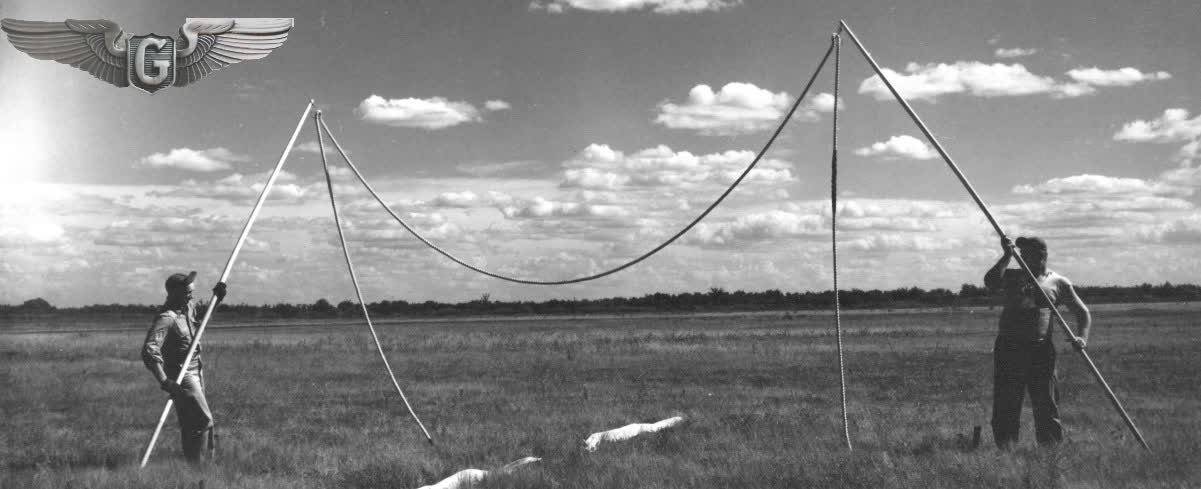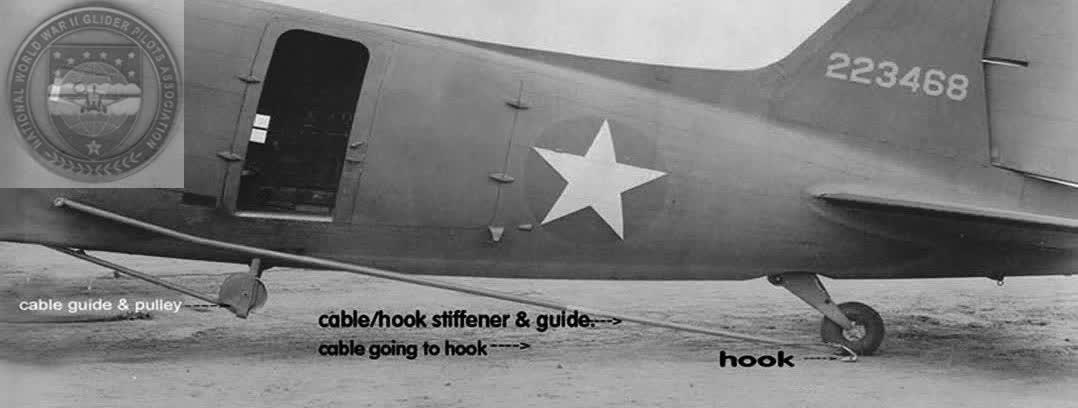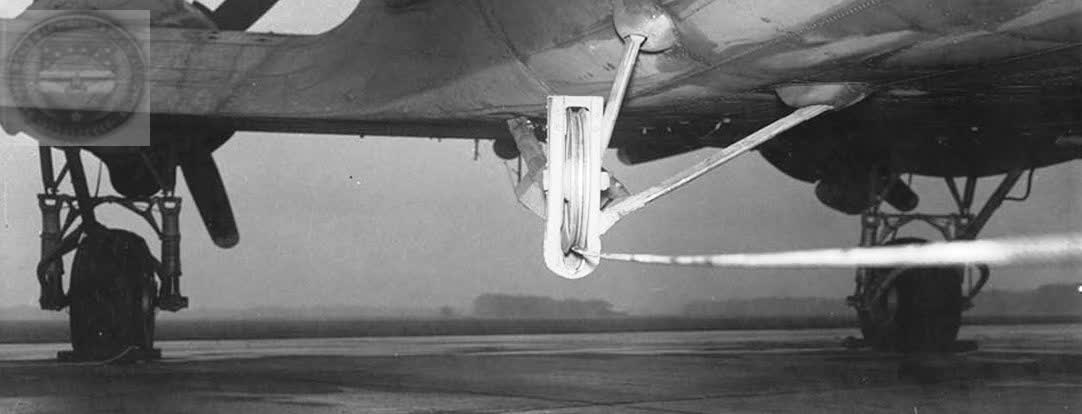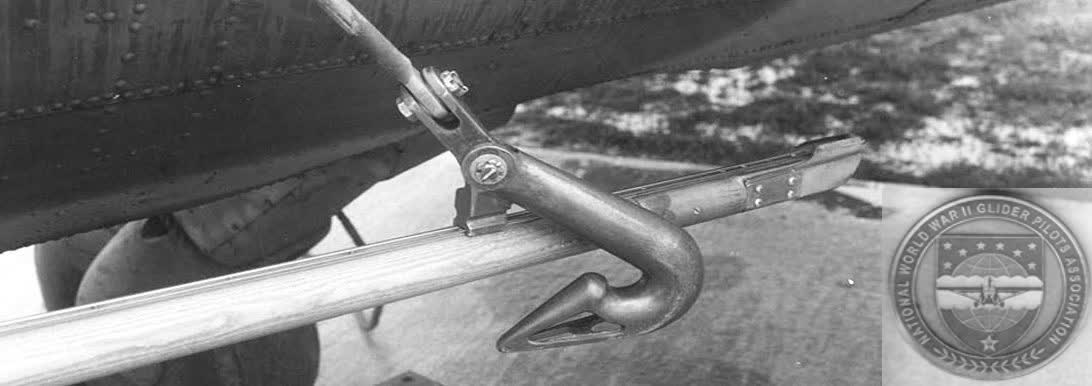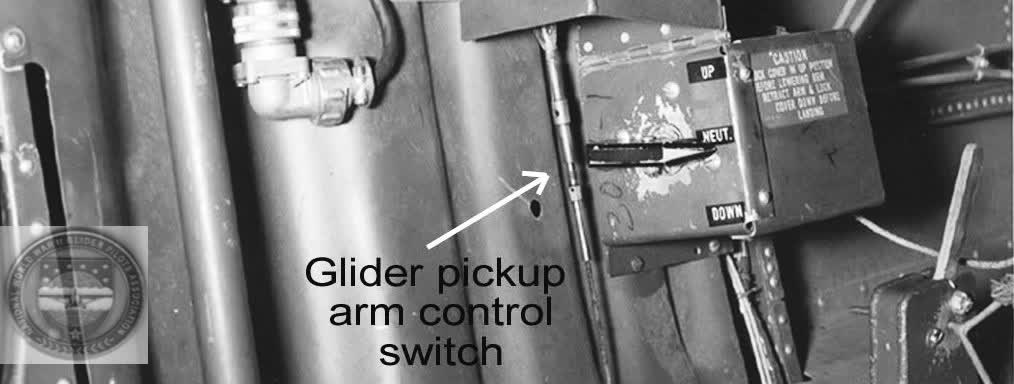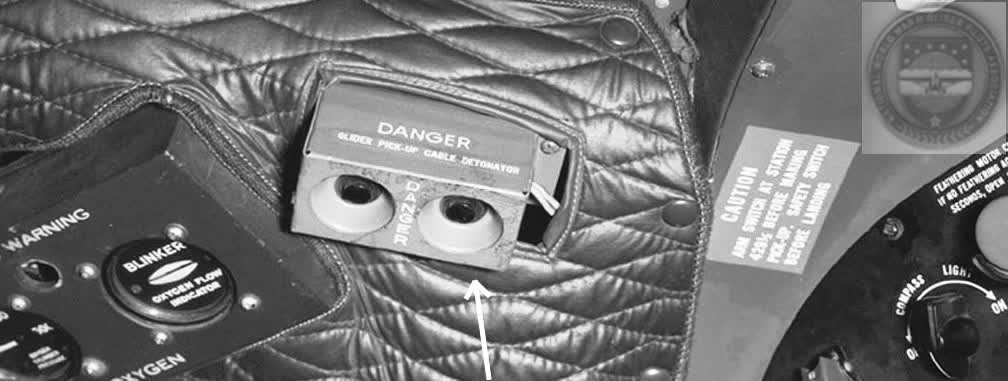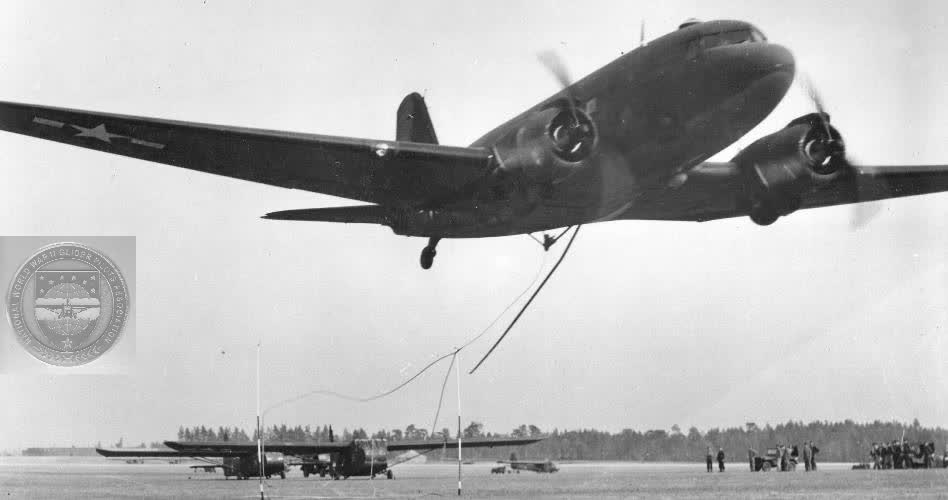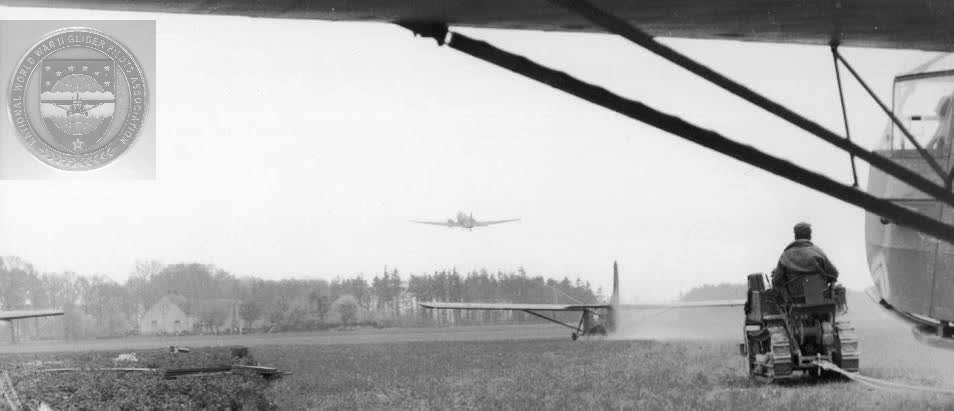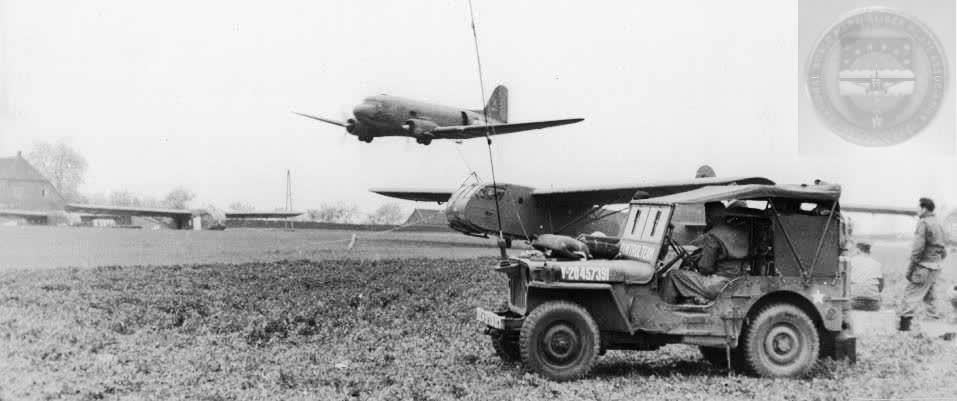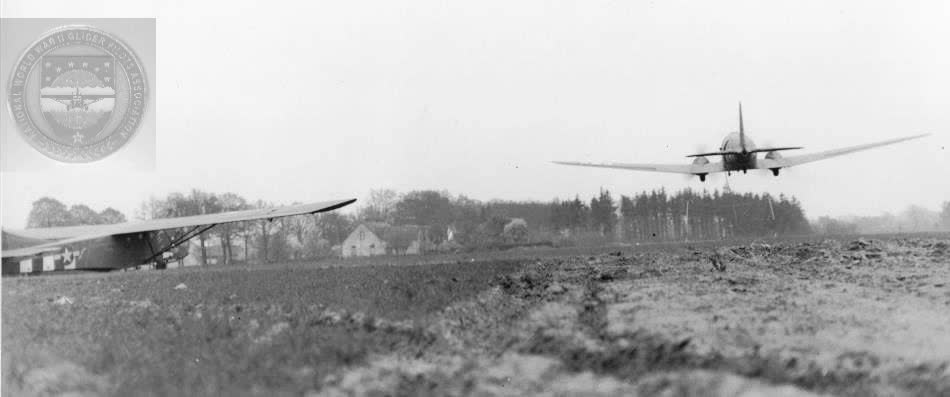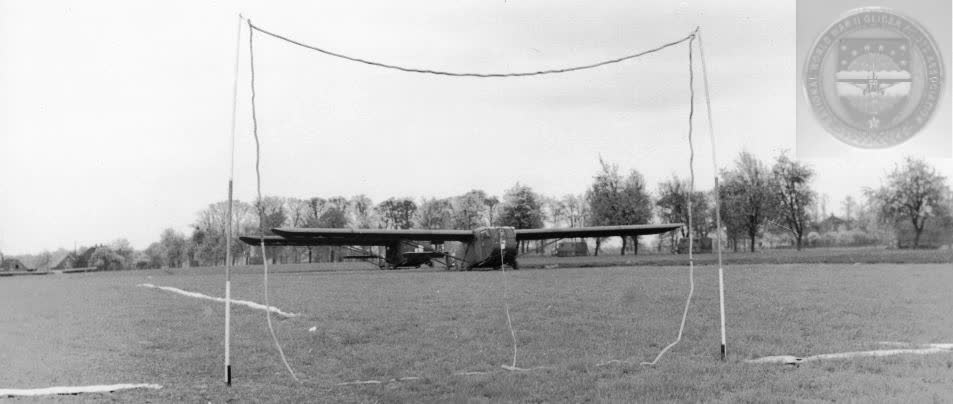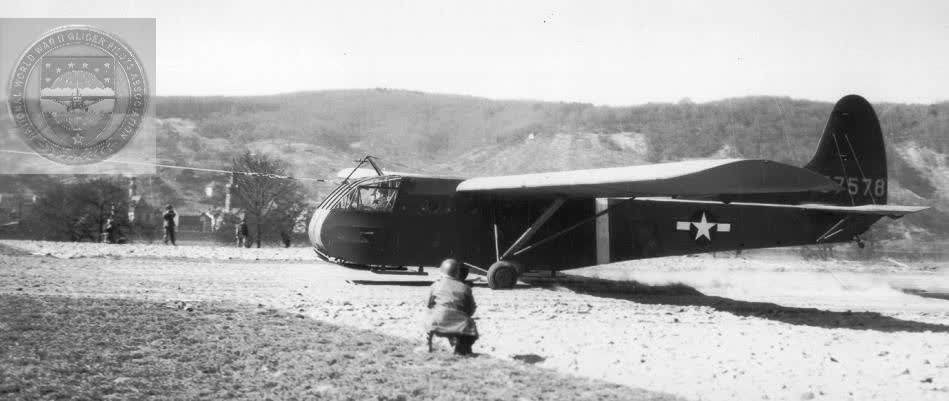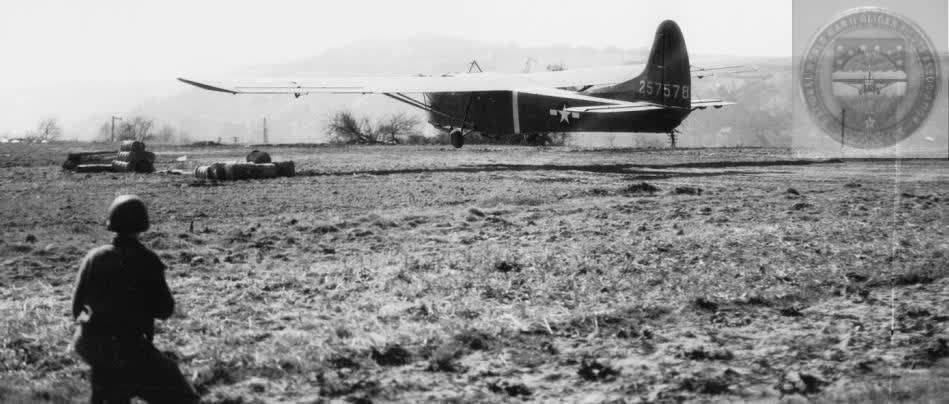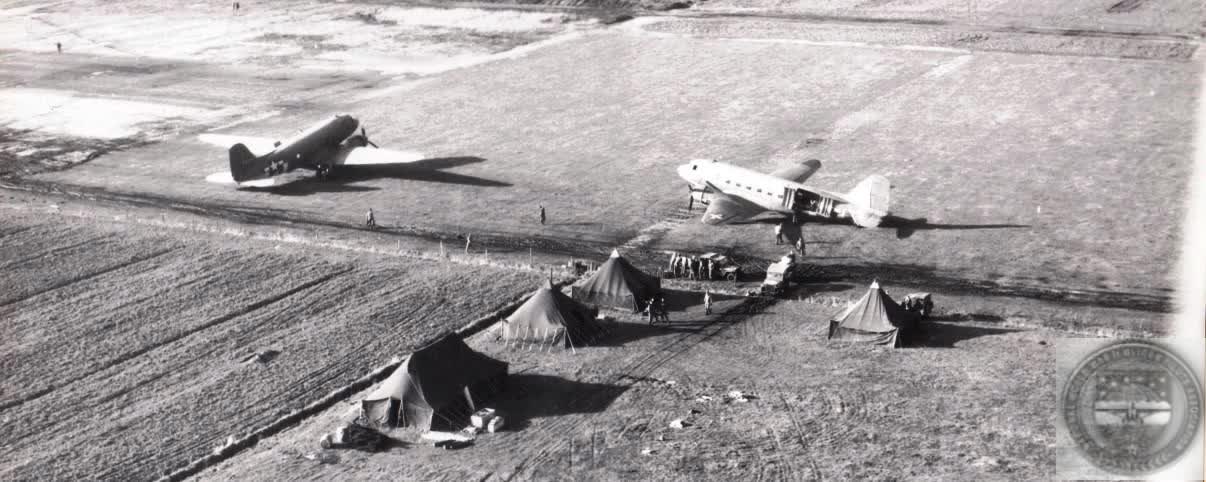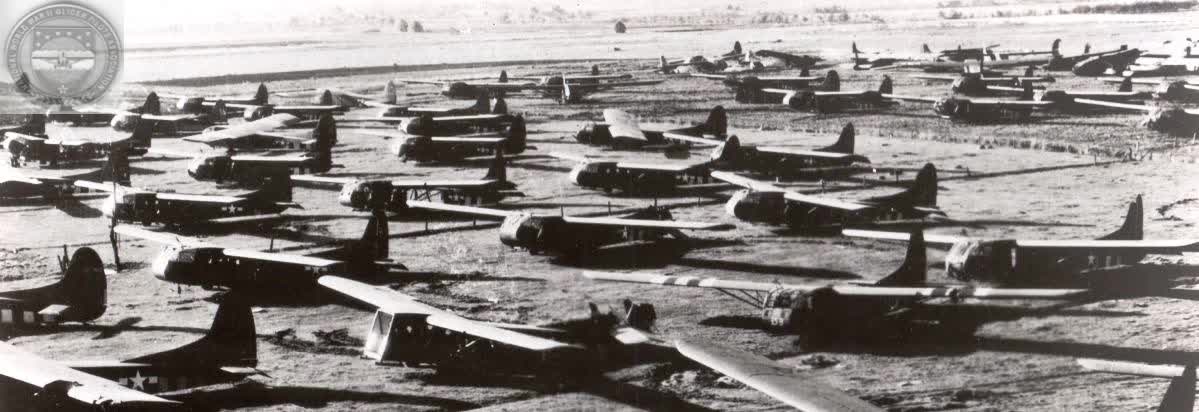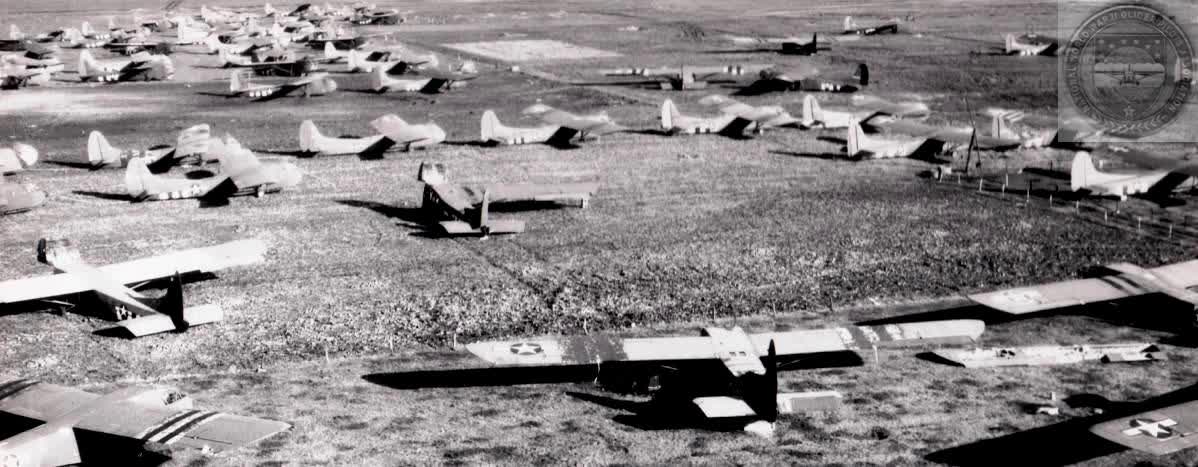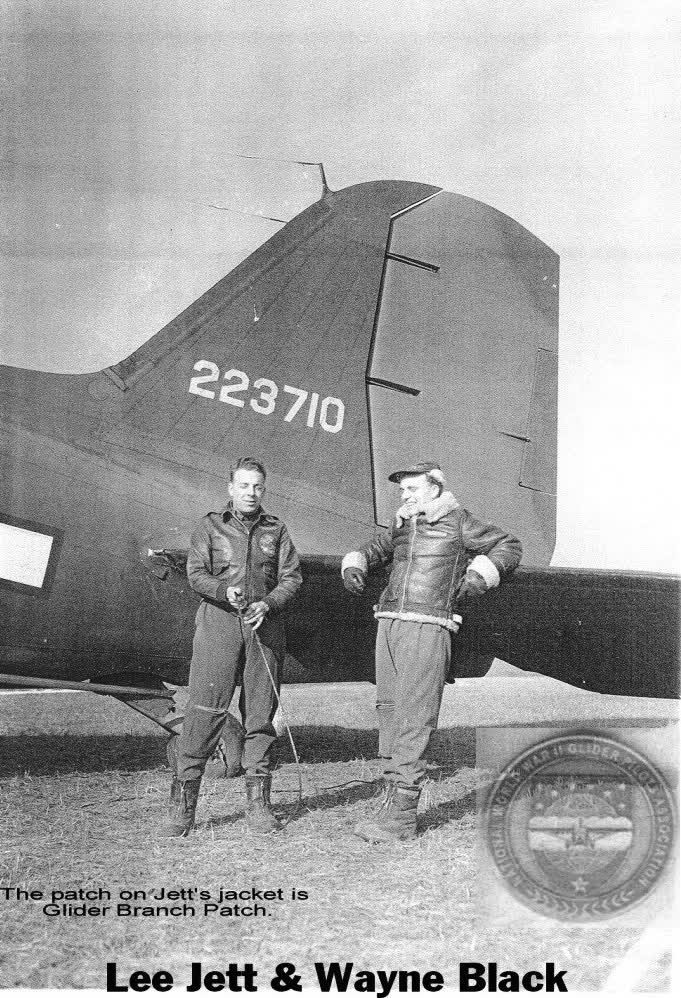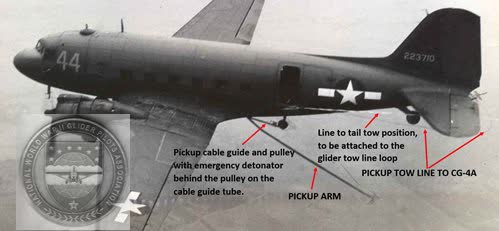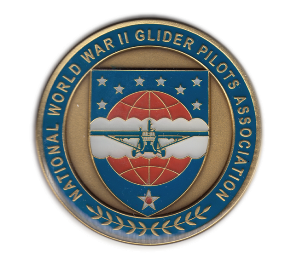National WWII Glider Pilots AssociationLegacy Organization of veterans National WWII Glider Pilots Association. Discover our History, Preserve our Legacy | ||
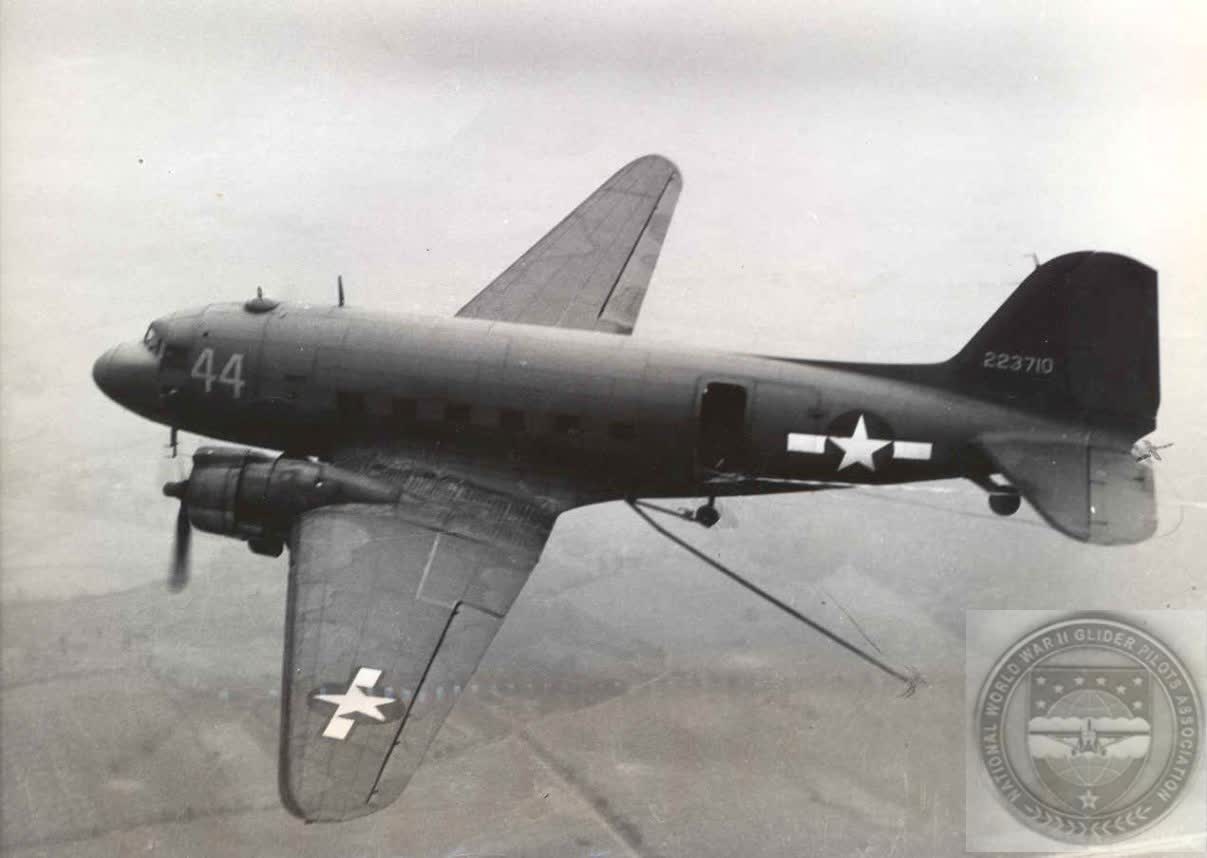 Experiments were conducted and a system developed for picking up one glider, transferring it to the normal C-47 tow release, resetting the pickup hook into the pickup and then picking up a second glider. Much of the information on this is verbal from Capt. Edward Lee Jett who flew the C-47 for these flights. The above C-47 #42-23710 was used for these pickups. The photo shows the aircraft with the first line about to be cut loose from its anchor point just inside the C-47 cargo section door. Sgt. Louis Winters was Jett's crew chief who ran the operation inside the C-47. I do not know for certain who the CG-4A pilots were but here are possiblities: Wayne Black [Joseph Mollinary] and John Bryant who were Jett’s favorite glider pilots. To my knowledge, these tests were flown out of Clinton County Army Air Field, Wilmington, Ohio.. Before being sent to Wright Field, Jett was a trained fighter pilot who is “said” to have flown under bridges and performed other flying feats that were not sanctioned by the USAAF. One day his group was asked for volunteers for duty at Wright Field. Lee Jett said he did not hesitate to volunteer, thinking that he would become a fighter test pilot at Wright. The Glider Branch engineering and test operations were just getting going and they needed another power pilot; so much for Jett becoming a fighter test pilot. Jett tutored under Norman Rintoul and Lloyd Santmeyer in snatch pickup procedures with pickups of dead weight, sheep, human, BT-13, XC-81D, and the larger gliders such as the CG-4A, CG-13A and XCG-10A. During his duty at Wright Field and Clinton County Army Air Field, Troop Carrier Command at Stout and Baer, plus various other Troop Carrier training bases, instructing on the snatch procedure, with post war duty at Greenville, SC into 1946, Jett performed more than 2,500 glider snatches. In 1945 he commanded one of the War Bond Tours featuring gliders piloted by John Bryant and Jackie Coogan. In 1946 at Greenville he flew all of the various tugs used to snatch gliders including the B-17 equipped with a model 180 winch with which he separately snatched the CG-4A, the CG-13A, the CG-15A and the CG-10A.
Looking at the C-47 #42-23710 note the following items:
In this next explaination, if you don't follow this in detail please don't feel badly. Our dear friend and head of the Glider Branch at Wright Field (1945-46) /Wright Patterson AFB (1947-52), Floyd Sweet, did not fully understand it either. This likely was because of my explanation rather than his comprehension. So, if you have questions, please ask. Procedure was as follows: (numbers relate to the ordered list above.)
This double snatch was a tricky and dangerous maneuver which required exact flying. Shortly before his death I quizzed Lee Jett about the night snatch system development. He replied he did not know night snatches were done. Basically his answer was that snatches in daylight were dangerous enough and had they asked him to do a single glider night snatch, he would have refused. 1 The glider branch patch mentioned on Jett's jacket is the virtually unknown "Goose and Duck" primarily designed by Disney Studios featuring Donald Duck pulling a Goggled Goose as a glider. Purportedly a few of these were hand painted on leather and there are two known eighteen inch diameter wall plaques, one painted in 1943, the other in 1945. (the 1943 item currently is MIA). Data Sources:
|
CG-4A WWII CARGO GLIDER GENERAL SPECIFICATION - CG-4A
Wing Span -- 83', 8" Length (Overall) -- 48', 3-3/4" Height -- 12', 7-7/16" Weight, design -- 3,750 lbs Gross Weight, design -- 7,500 lbs Wing Chord -- 10', 6" Specs for covering the CG-4A call for: Flightex Intermediate airplane fabric manufactured by Suncook Mills, or an equivalent light airplane cotton fabric. More Specifications
CG-4A WAS FLIMSY? COMMUNICATION SYSTEM CG-4A Loads CG-4A Load Facts CG-4A Cockpit CG-4A Instrument Panel 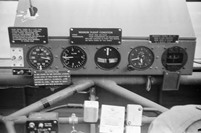 STORIES:
|
The HORSA GLIDER |
GLIDER PICKUP/Snatch Snatching a Glider RECLEMATION American Glider Pilots Captured by British A/B by William SIMONSEN Double Snatch by Charles Day First Glider Snatched from Normandy by Gerald BERRY REMAGEN Glider Retrieval by Jungle Moonlight: Burma, 1944 by Leon SPENCER Charles DAY Keith H. THOMS NWWIIGPA Deputy Wing Commander
Eastern United States Military Snatch Pickup Summary
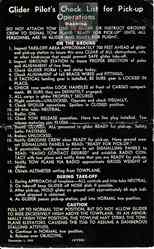
Glider Pilot Check List
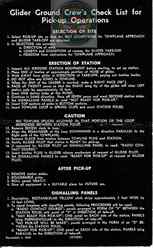
Glider Ground Crew Check List
|
OUR TOW SHIPS |

